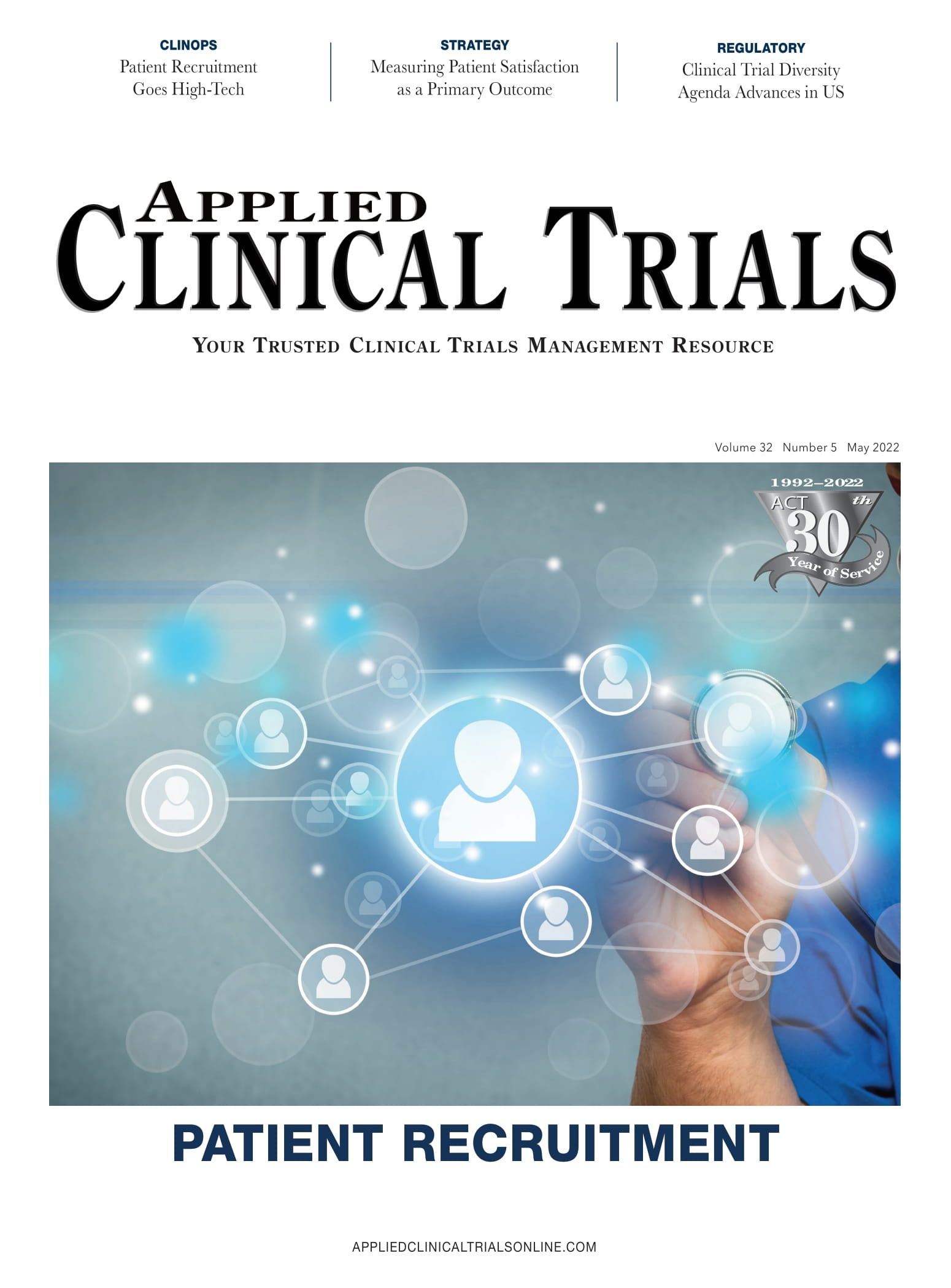Patient Participation is a Team Sport
ACT presents solutions to foster greater participation in May issue.

Patient recruitment remains the largest impediment to clinical trials progress. Barriers to participation are numerous and as noted in this article, can be broken down into these buckets on the recruitment progression cycle—awareness, identification, information and consent, patient-centric operations, and accelerated regulatory approval. Each of these buckets or progressions contain a plethora of ideas, strategies, technologies, and choices. And at any one of these progressions, a potential participant can be lost.
The reality of patient recruitment is that its success depends on those myriad factors under the buckets, in addition to an individual’s behavior or personal beliefs. According to survey results in this white paper from IQVIA, “When asked what prevents them from participating in a trial, fears about their health and safety (62%) far outweighed concerns about time (37%), logistics (18%), and negative press about research (8%).” Further influences can be analyzed by gender, race, and ethnicity, all coalescing around choosing to participate.
In this issue, we present a fraction of the exhaustive list of options that currently exist to foster recruitment. Virtual waiting rooms, for example, where potential participants can learn, discuss, and express interest in a clinical trial for a near-future opportunity to participate and remain engaged. Sharing clinical trial results with pediatric patients is a way to engage younger generations, as well as their parents or caregivers by providing transparency into the process. Tufts CSDD offers advice to sponsors and CROs on how to re-prioritize routine assessment of patient satisfaction as a primary outcome measure. And our main feature offers an overview of recent technologies such as patient opt-in solutions; EMR funnels to find appropriate patients for outreach by physicians; and solutions that find and monitor participants in the community via pharmacies such as CVS or Walgreens.
In this issue, we purposely did not highlight decentralized trials, which offers components that improve patient participation and experience under the patient-centric operations bucket.
Starting or piloting any new initiative to increase patient recruitment is a plus. Whatever you can do to increase the exposure and access for the potential of a clinical trial participation will help. Remember, “You miss 100% of the shots you don’t take.”
Lisa Henderson is Editor-in-Chief of Applied Clinical Trials. She can be reached at lhenderson@mjhlifesciences.com.

Improving Relationships and Diversifying the Site Selection Process
April 17th 2025In this episode of the Applied Clinical Trials Podcast, Liz Beatty, co-founder and chief strategy officer, Inato, discusses a number of topics around site engagement including community-based sites, the role of technology in improving site/sponsor relationships, how increased operational costs are impacting the industry, and more.
Behind the Buzz: Why Clinical Research Leaders Flock to SCOPE Summit
February 7th 2025In this episode, we meet with Micah Lieberman, Executive Conference Director for SCOPE Summit (Summit for Clinical Ops Executives) at Cambridge Innovation Institute. We will dive deep into the critical role of collaboration within the clinical research ecosystem. How do we bring together diverse stakeholders—sponsors, CROs, clinical trial tech innovators, suppliers, patients, sites, advocacy organizations, investors, and non-profits—to share best practices in trial design, program planning, innovation, and clinical operations? We’ll explore why it’s vital for thought leaders to step beyond their own organizations and learn from others, exchanging ideas that drive advancements in clinical research. Additionally, we’ll discuss the pivotal role of scientific conferences like SCOPE Summit in fostering these essential connections and collaborations, helping shape the future of clinical trials. Join us as we uncover how collective wisdom and cross-industry partnerships are transforming the landscape of clinical research.